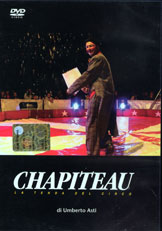
“Chapiteu”
The Rossi circus is made by Roberta Rossi and by her sons Maicol and Sendy and by Aline, Maicol’s girlfriend. Sometimes, other artists are hired for a short term, like tightrope walkers Alessandro and Cristina. Life is hard for a small circus, due to many different reasons: it’s only thanks to an intense passion for this job that they can cover expenses. This film is a journey into their world, using POV shot. The camera moves as if it was held by a stranger character, curious of discovering and learning. The artists talk directly to the camera: day by day, they give deeper insights into themselves and their work. The camera takes part into the circus life, recording carefully all dialogues, challenges and anxieties. At night, the camera takes a seat among the audience in the first row, watching the show with the eyes of the youngest attenders. watch the trailer
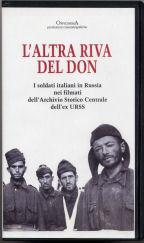
“L’altra riva del Don”
The stunning images shot by Soviet operators during World War II are finally available for the first time, showing the battlefields, Italian prisoners filmed right after being caught, and providing direct evidence by female soldiers. These images reveal the cruelty of war as experienced also on the other side of the Don River...
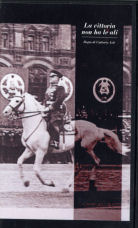
“La vittoria non ha le ali”
The war on all Fronts of WWII caught and interpreted by the lenses of Evgenij Chaldej, nowadays regarded as one of the world’s top war photographers together with Robert Capa. The making of many of his famous pictures, explained by himself, is enriched with previously unreleased documents from the most important ex-Soviet archives and with direct evidence by people who had worked in close contact with him. They were filmed in Moscow, Vienna and Berlin. A vivid flashback links the past and the present, as if in Chaldej’s own memory. This film is a loud cry against war, raised by Chaldej’s compassionate attitude towards the enemy and conveyed by the basic values he cherished in times of awful tragedies and high hopes.
. 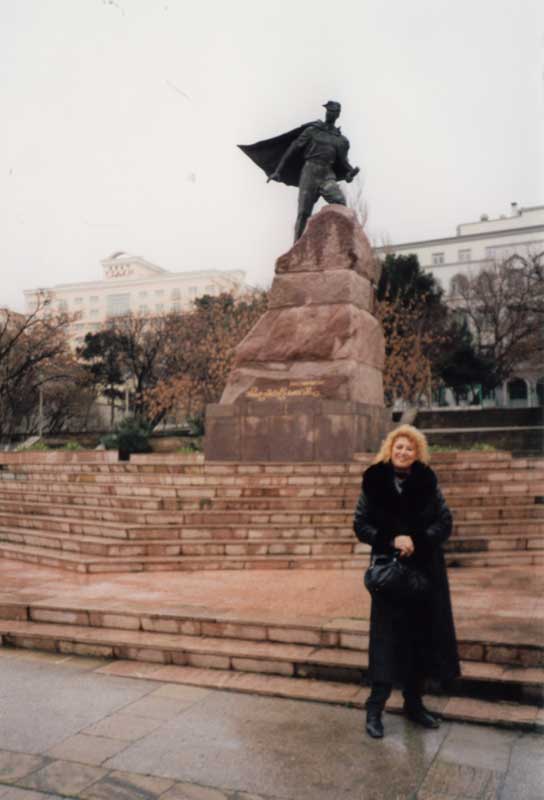
( Baku, March, 2001. The author in front of the monument to Husein Zade (Mihajlo), the national heroe of Azerbaijan. Picture taken by the triestine journalist Silvio Maranzana, while doing together a report on Russian partisans. )
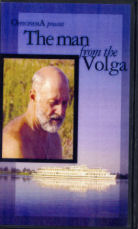
"L’uomo del Volga"
by Umberto Asti, edited by Marina Rossi, Prod. by Officinema, Parma, 1999.
The story of the former Red Army colonel Jurij Sadcikov tells the past and the present of Russia. Born on the Aral Sea in 1932, he emerged unscathed from the traumatic events unfolding in his country. After moving to Moscow in the ‘60ies, he rapidly joined the High Command. He married a prominent piano player, choosing with her a pleasant village on the Volga river as their place of residence during part of the year, formerly inhabited by farmers and shepherds belonging to an important Cholkoz. This film is as much about the story of his life as the world around him, from Kazahkstan to Moscow to the Tver area, where in the ’30ies an extensive canal system with floodgates had been built by prisoners deported by Stalin, linking river Moskva to river Volga. Here is where the Soviet Army engaged in the defense of the capital city during the Nazi invasion in the Autumn of 1941: the signs of the war are still plainly visible in this territory.
.
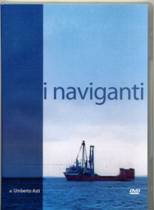
“I naviganti”
by Umberto Asti, subject by Marina Rossi, prod. by Officinema, Parma, 2006
Some years ago, coming back home late by car, I would stumble upon the marine weather forecast on the radio. It was read out so slowly, as if dictated.
A buoy with no light placed somewhere in the open could summon the sense of the sea like nothing else: the sea as a vast open space to sail forever, the vanishing horizon as my finishing line. I wanted to be on a small cargo boat, paying attention to that buoy that wasn’t working. I wanted to live among those sailors, sharing their food, their talks and their thoughts. And I wanted to go far and wide... Free as a bird flying into the infinite.
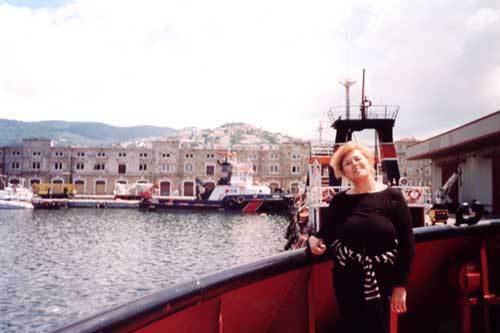
(At the Porto Vecchio in the harbour of Trieste, preparing the subject of “I naviganti”)
With the help of new digital technologies and sharing ideas with Marina Rossi, I have finally found my boat: The Storm. The Storm gave me the chance of telling the everyday life of a bunch of men speaking the same language with different accents: you can tell which part of Italy they come from. Twelve people share their ups and downs, they laugh and work side by side. Wearing a mask on board would be useless: they look just the way they are. Nothing special happens on The Storm, the same tasks and gestures are performed in the canteen and on the bridge deck, with the radio as a background noise. Yet every repetition feels like new and interesting, because it is genuine and real.
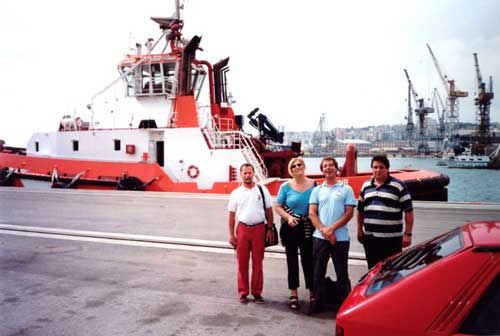
(At the Porto Vecchio in the harbour of Trieste, preparing the subject of “I naviganti”)
This beautiful reality is what I have tried to tell like a story
|
“Cronache militari dal fronte galiziano e balcanico” (prod.Video & Video-Trieste) per la mostra Sui campi di Galizia promossa dal Museo Storico Italiano della Guerra di Rovereto, 1996. |
|
|
|
“Prigionieri della guerra”, di Jervant Gianichian e Angela Ricci, ed. Rossato, 1995. |
|
|
“La frontiera” di Franco Giraldi |
|
|
"Compagno Tito”, di Buondì, realizzato dalla Rete Tre della Rai Radio Televisione Italiana. |
|
|
“Passano i soldati”, di Luca Gasparini, prod. Fandango, 2000-2001. |
|
|
“Trieste sotto” con la regia di Marino Maranzana, prod. Koinè per Rai International, Roma 2002. |
